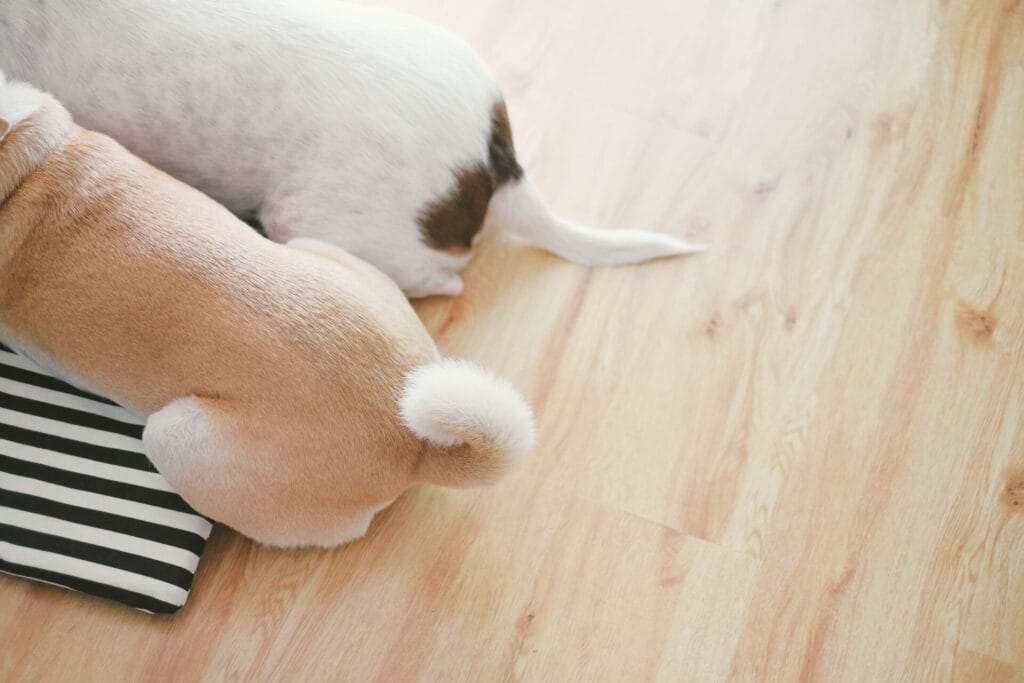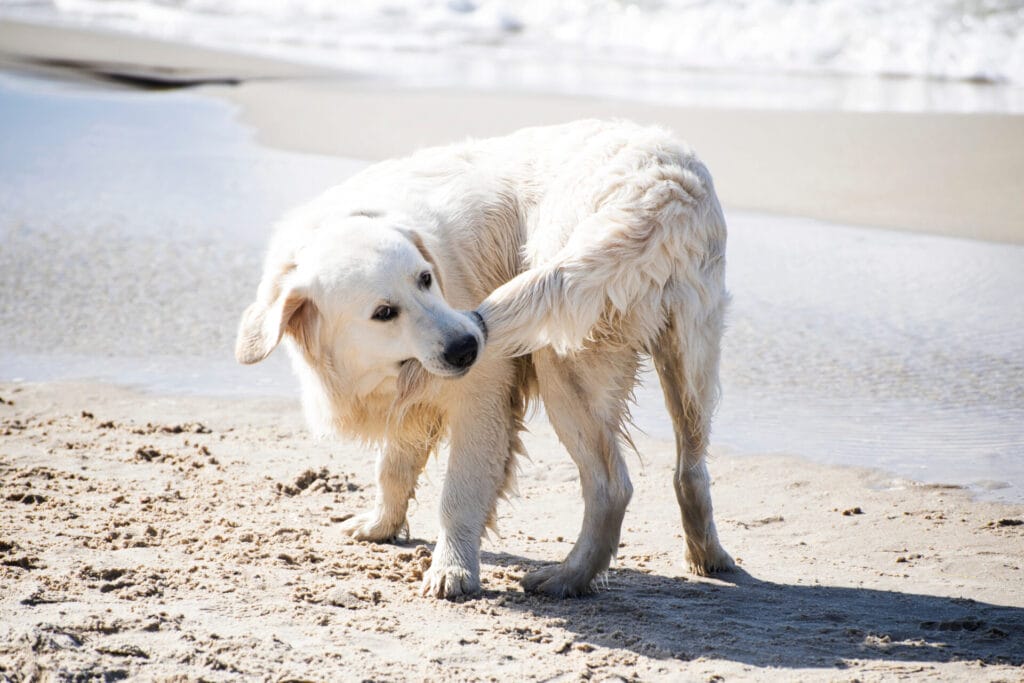Dogs are known for their wagging tails, which often signify joy, excitement, and happiness. A dog’s exuberant tail wagging occasionally leads to a condition: “Happy Tail Syndrome.” Although seemingly harmless, this condition can cause significant discomfort and complications for our furry friends. In this article, learn all about the causes, symptoms, and treatment options of Happy Tail Syndrome.
What is Happy Tail Syndrome?
Happy Tail Syndrome is also known as kennel tail or split tail. It occurs when a dog’s tail tips repeatedly strikes hard surfaces and tail tips. Often the tail has an open wound, bleeding, inflammation, and/or pain. Large, active breeds with long, heavy tails have the highest risk, though any dog with a tail is susceptible.
Causes of Happy Tail Syndrome
The primary cause comes from a dog’s tail repeatedly striking hard surfaces. The forcefulness results in the injury. Some common situations that can lead to this condition include:
- Tail Wagging. Dogs with exuberant wagging tails can inadvertently hit them against walls, furniture, crates, or other solid objects.
- Excitement and Activity. Dogs engaged in energetic activities and crowded environments may accidentally injure their tails.
- Confinement. Dogs confined to small spaces, such as crates or kennels, may repeatedly hit their tails when attempting to move.

Recognizing Symptoms
The signs of Happy Tail Syndrome are typically localized to the tail tip and may include:
- Open wounds or cuts on the tail, often accompanied by bleeding.
- Swelling and inflammation on the affected area. Look for redness, swelling, and tenderness..
- Pain and discomfort. For example: vocalization, reluctance to move their tails, or sensitivity when touching the tail.
- Infection if left untreated can also lead to additional complications.
Treatment Options
When dealing with Happy Tail Syndrome, it is important to consult a veterinarian for a proper diagnosis and treatment plan. The veterinarian will evaluate the severity of the injury and recommend the following:
- Wound Cleaning. The wounds must be cleaned thoroughly to prevent infection. This may involve gentle flushing with antiseptic solutions or specialized wound cleansers.
- Tail Bandaging. Depending on the location and severity of the injury, the veterinarian may suggest bandaging the tail to protect the wound and promote healing. The bandage should be snug but not too tight to avoid circulation issues.
- Antibiotics: The veterinarian may prescribe antibiotics to combat bacteria and prevent further complications if there is evidence of infection or a high risk of infection.
- E-collar or Tail Wrap: An Elizabethan collar (E-collar or cone) or a tail wrap may be recommended to prevent the dog from exacerbating the injury by licking or biting the tail.
- Pain Management: Pain medications or anti-inflammatory drugs may be prescribed to alleviate discomfort and promote the dog’s well-being during healing.
Prevention and Management
To prevent Happy Tail Syndrome or minimize its recurrence, consider the following preventive measures:
- Safe Environments: Provide your dog with a safe and spacious living area, free from sharp objects or surfaces that can cause tail injuries.
- Supervision and Restraint: Keep an eye on your dog during energetic play sessions and ensure there is enough space to avoid collisions with furniture or walls.
- Tail Protection: In some cases, protecting the tail with a padded covering or a tail guard can prevent further injury and promote healing.
- Tail Docking: In certain instances, for dogs prone to recurrent Happy Tail Syndrome, tail docking may be considered after thorough discussions with your veterinarian. This is a personal decision and should be approached with careful consideration.

Happy Tail Syndrome is a condition that can cause discomfort and complications for dogs. Understanding the causes, recognizing the symptoms, and seeking prompt veterinary care is crucial for effective treatment. By implementing preventive measures and providing a safe environment, you can help minimize the risk of Happy Tail Syndrome and ensure your dog’s tail wagging remains joyful and injury-free.



















